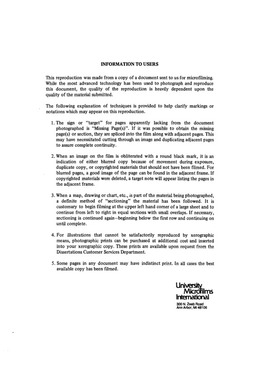| dc.contributor.author | Alcocer Alarcócarlos, | en_US |
| dc.date.accessioned | 2013-08-16T12:28:47Z | |
| dc.date.available | 2013-08-16T12:28:47Z | |
| dc.date.issued | 1982 | en_US |
| dc.identifier.uri | https://hdl.handle.net/11244/5060 | |
| dc.description.abstract | Laboratory research was conducted to study displacements of crude oil by high-pressure nitrogen injection. The objectives of this research were to study the effect of temperature and gas-oil ratio in solution on crude oil recovery and miscibility process in high-pressure nitrogen injection; to study nitrogen effectiveness in crude oil recovery after waterflooding and to investigate the effect on oil recovery of nitrogen-driven propane slugs. Nine experimental tests were performed using crude oil of 42.3(DEGREES) API recombined with natural gas. The experimental tests were made using two temperatures (70(DEGREES)F and 120(DEGREES)F) and three gas-oil ratios in solution (575 SCF/STB, 400 SCF/STB and 200 SCF/STB). The reservoir model was a stainless steel tube 125 feet long and .435 inches in diameter packed with san consolidated to give an average permeability of 910 md. The model was provided with five sampling valves to collect vapor samples. The vapor samples were analyzed by using a chromatograph. A temperature control system was built based on the results obtained from a heat transfer mathematical model specifically prepared for this research. The results obtained in this study suggested very strongly that crude oil and miscibility depend on temperature and gas-oil ratio in solution. A multiple-regression equation to predict crude oil recovery using temperature and gas-oil ratio in solution was developed based on the experimental data. Another multiple-regression equation was developed and presented to predict crude oil recovery using temperature, gas-oil ratio in solution and injection pressure as predictors. High-pressure nitrogen injection after waterflooding yielded low oil recovery. However, the results suggest that high crude oil recovery may be expected from displacement using nitrogen-driven propane slugs. Recommendations are made for future research projects continuing the studies on secondary recovery by nitrogen-driven propane slugs and on tertiary recovery by high-pressure nitrogen injection after waterflooding. | en_US |
| dc.format.extent | xvi, 329 leaves : | en_US |
| dc.subject | Engineering, Petroleum. | en_US |
| dc.title | A laboratory study with a light crude oil to determine the effect of high-pressure nitrogen injection on enhanced oil recovery. | en_US |
| dc.type | Thesis | en_US |
| dc.thesis.degree | Ph.D. | en_US |
| dc.thesis.degreeDiscipline | Mewbourne School of Petroleum and Geological Engineering | en_US |
| dc.note | Source: Dissertation Abstracts International, Volume: 43-11, Section: B, page: 3709. | en_US |
| ou.identifier | (UMI)AAI8306714 | en_US |
| ou.group | Mewbourne College of Earth and Energy::Mewbourne School of Petroleum and Geological Engineering | |
